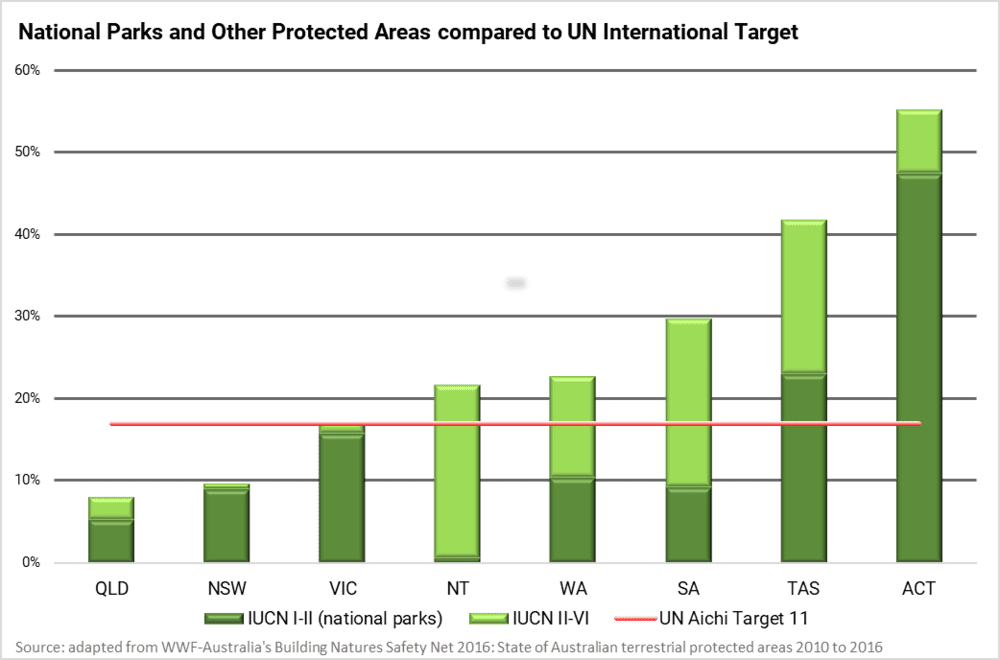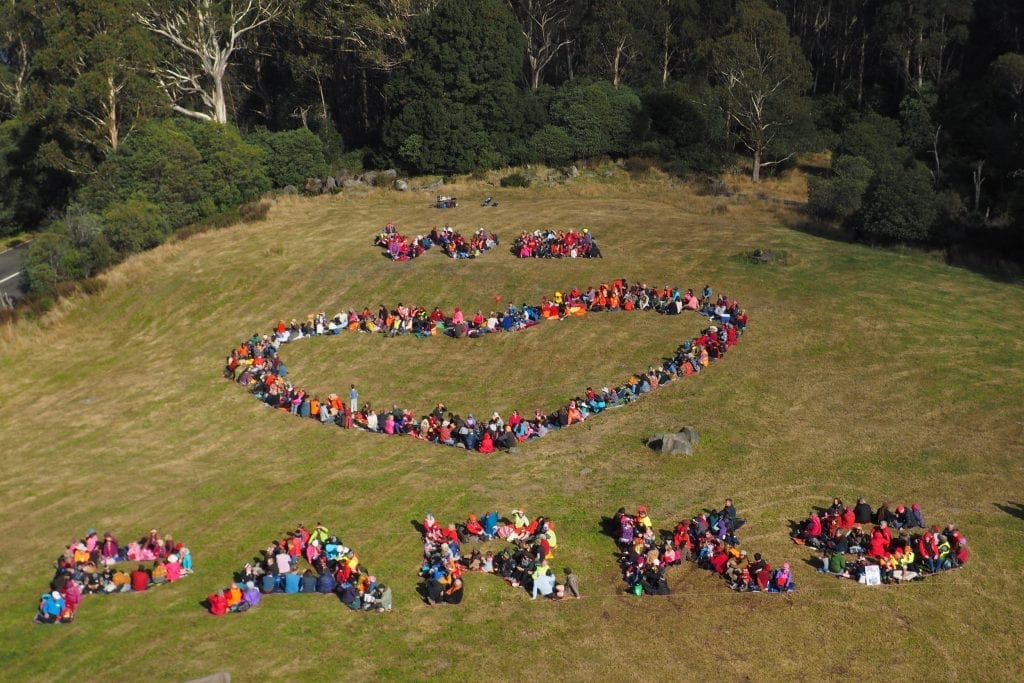National Parks
Coming together for protected areas

Queensland is a large biologically diverse state that European settlement has dramatically altered.
Over 200 years the area of forest, shrubland and heathland in Queensland has declined from 80% to 30% of the state (Bradshaw, 2012).
64% of Queensland is leased crown land.
28% of Queensland is private freehold land.
33.27% of the state is presently occupied by some form of tenure that allows commercial extraction or exploitative use of the land.
It is not unreasonable that we reserve 17% of Queensland’s land area for nature conservation.
While there is no doubt that development has contributed to the high standard of living that most of us enjoy, all actions have consequences. The price of land exploitation over the last two centuries, has not been fully factored into our economy.
As we move from a production to a service-based economy it is reasonable to ask: can we keep doing what we have been doing? How do we focus on the long term and the quality of life for future generations?
Our state’s biodiversity has borne the brunt of much of our activity. The last State of the Environment Report contains some sobering figures. From 2007 to 2015 a further 61 fauna species became extinct, endangered or vulnerable (threatened). 68 recognised threats are contributing to this; key ones being vegetation clearing and inappropriate fire and grazing regimes. During the same period 275 plant species became threatened – the key contributing processes again being clearing, the spread of weeds and inappropriate fire regimes.
There is a logical relationship between protecting land in its natural state and biodiversity conservation. Of course, other matters such as management, connectivity, and edge effects all come into play.
The Queensland Government has embraced a target of 17% of its land area being protected through formal conservation frameworks. We support this, but our fear is that this 17% could end up being the land that nobody wants, not the land that most needs conserving.
Further, this kind of aspirational target without a realistic pathway to achieve it is meaningless. We will certainly not achieve this target by 2020 – the date set in the Convention on Biological Diversity.
Indeed, our projections show that at our current rate, we might not even achieve this milestone this century.
Our further fear too is that as the government embraces private protected areas, that we will not see new national parks and the current protected area ratio of 70:30 in favour of national park land will be lost.
Queensland’s present protected areas, amounting to 8% of our state, need to be increased, but in a targeted way so that those plant and animal communities with least secure protection are prioritised and a baseline strong network of national park protections is assured. Apart from being sound stewardship of our land, this can have potential economic benefits. Tourist interest in natural areas is growing, bringing in approximately $952 million each year and our government is enthusiastic to capitalize on this. We can transition from a model of exploitation – with its focus on jobs and economic activity, to one tempered with proper management of our land so that its values remain for the long term.
Our state has made incremental increases in our protected area estate, apart from the recent Cape York Joint Management Areas. The Cape York expansion resulted in $35.9 million being devoted to managing an additional 700,000 ha of new dedications and has been hailed as a success. Prior to this, it was the Labor government of Wayne Goss with Pat Comben as Environment Minister that dramatically increased our protected area estate.
The graph below shows Queensland in comparison to other states. It paints an unfortunate picture.
Apart from expansions in park area, management of our national parks requires better resourcing to maintain and enhance biodiversity values.
Expansion and management are the focus of the new alliance of conservation groups, which have endorsed a considered position paper suggesting a way forward for the state.
The six key requests directed to government in this paper are:
• Strengthen the law – Cardinal Principle
• Grow and better manage our national parks
• Grow private protected areas
• Support Indigenous land management
• Restore land to Traditional Owners and create new protected areas
• Fund our protected areas
The state has an opportunity to incorporate the recommendations of the position paper into the next and subsequent budget rounds. We are also yet to see a revised Protected Area Strategy for the state. The timing is right to be bold and re-affirm the value we place on our natural areas. Our government can prepare and commit to a multi-year plan of acquisition and enhanced management with clearly articulated objectives.


